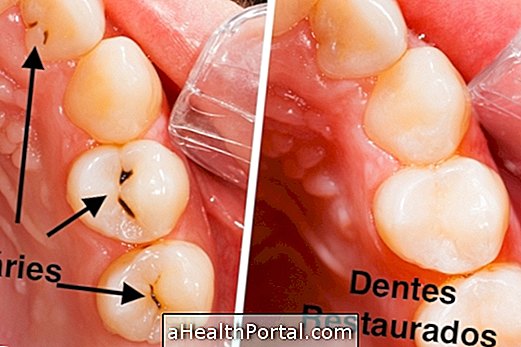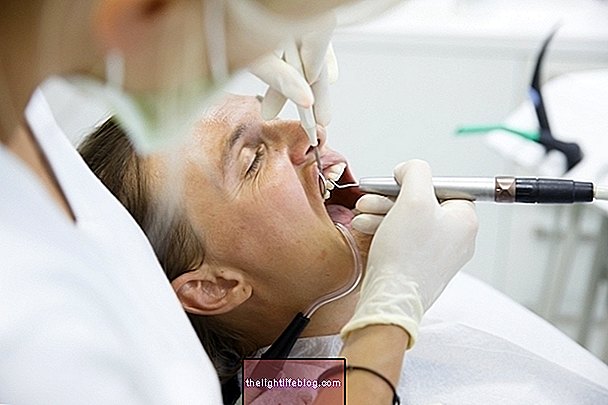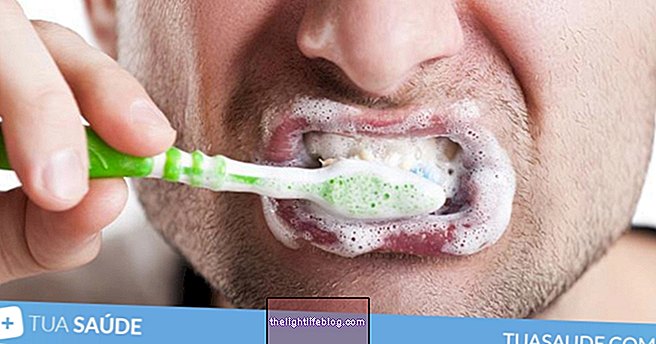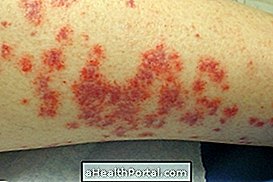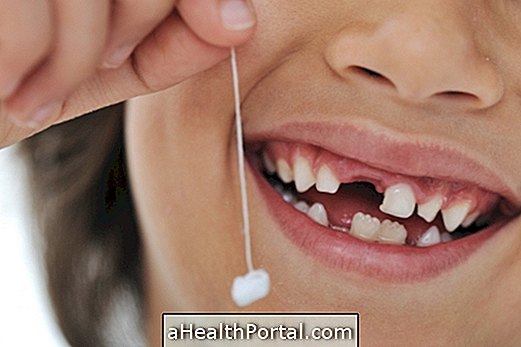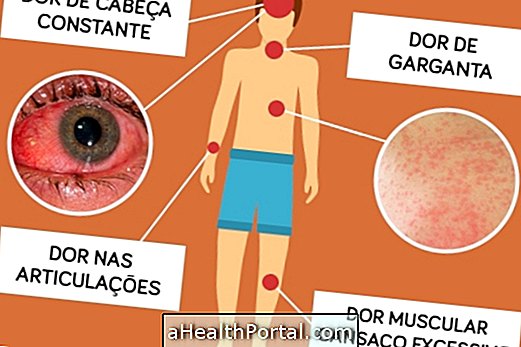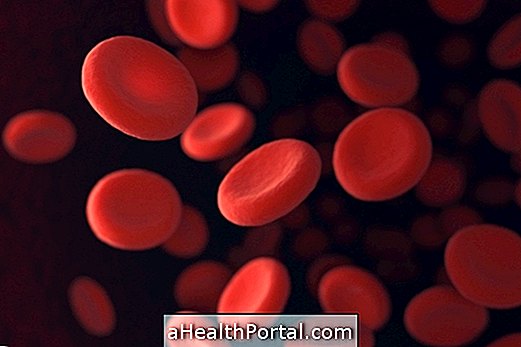White spots on the tooth may be indicative of caries, excess fluoride, or change in tooth enamel formation. Stains can occur on both the teeth and permanent teeth and can be prevented by periodic trips to the dentist, flossing and correct brushing at least 2 times a day.
The 3 main causes of white spot on the teeth are:
1. Caries
The white spot caused by caries is the first sign of enamel wear and usually occurs in places where there is food accumulation, such as near the gum and between the teeth, which favors the proliferation of bacteria and plaque formation. Learn more about the symptoms, causes and treatment for dental caries.
Caries is usually related to lack of adequate oral hygiene associated with excessive consumption of sweet foods, which favors bacterial growth and appearance of plaques. Thus, it is important to brush your teeth well, preferably with fluoride toothpaste, and floss at least 2 times a day, especially before bedtime.

2. Fluorose
Fluorosis corresponds to excess exposure to fluoride during tooth development, either by increased application of fluoride by the dentist, large amount of toothpaste used to brush teeth or accidental consumption of toothpaste with fluoride, which leads to the emergence of white patches on the teeth.
White spots caused by excess fluoride can be removed by means of whitening or placement of dental facets, also known as dental contact lenses, according to the dentist's recommendation. Know what to do and when to put contact lenses on your teeth.
Fluoride is an important chemical element in preventing teeth from losing their minerals and preventing wear and tear caused by bacteria and substances present in saliva and food. Fluoride is usually applied in a dental office from the age of 3, but may also be present in toothpastes, and a small amount is used on a day-to-day basis. See the benefits and risks of fluoride application.
3. Enamel hypoplasia
Enamel hypoplasia is a condition characterized by deficiency of tooth enamel formation, leading to the appearance of small lines, lack of part of the tooth, changes in color or appearance of spots depending on the degree of hypoplasia.
People with enamel hypoplasia are more likely to have cavities and suffer from sensitivity, so it is important to go to the dentist regularly and maintain good oral hygiene. Usually blemishes caused by hypoplasia are easily treated by means of tooth whitening or use of remineralising toothpastes. However, if apart from stains there are missing parts of teeth, dental implants can be indicated by the dentist. Learn more about what is hypoplasia of tooth enamel, causes and how is the treatment.
What to do
To prevent the appearance of white spots on the tooth it is recommended to go to the dentist regularly for a routine cleaning, which removes plaques, tartar and some stains. The dentist may also indicate microabrasion, which corresponds to a superficial wear of the tooth, or tooth whitening. See 4 treatment options for teeth whitening.
In addition, a change in food may be indicated by the dentist, avoiding acidic foods and drinks so that no further damage to the tooth enamel occurs. It is also important to perform the correct oral hygiene at least 2 times a day by brushing and flossing. Learn how to brush your teeth properly.
